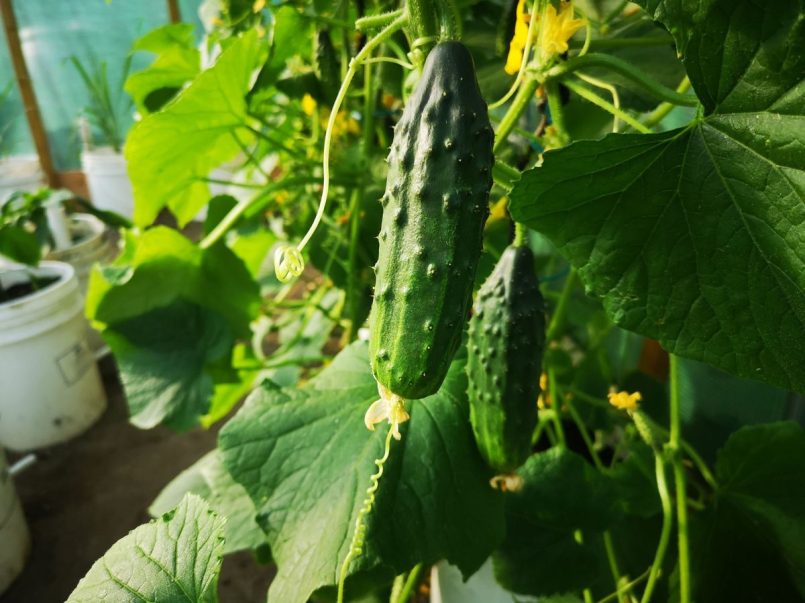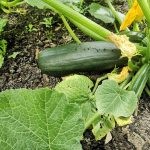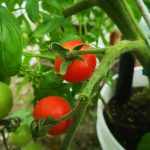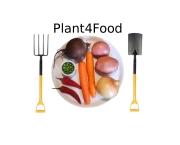A fast-growing, low-maintenance plant, just snip your homegrown cucumbers off the vine and add them to salads or sandwiches. They grow best in a greenhouse or polytunnel, but there are also outdoor varieties. Provide them with lots of water and support as they climb, and they will reward you with an abundance of juicy cucumbers. You can also grate them into a homemade tzatziki dip, or even add them to cakes and buns. Cucumbers are delicious pickled in vinegar, allowing you to enjoy them well beyond their growing season.
10 reasons to grow cucumbers
- Seed packets sold in most shops.
- Seeds germinate in any compost.
- Fit in the smallest garden or greenhouse, because they are vine plants and grow upwards.
- Low maintenance, they just need watering regularly.
- Prolific growers so a never-ending supply of cucumbers.
- You can save cucumber seeds for next year.
- They can be pickled in vinegar, so they will keep for months.
- Easy to prepare – thicker-skinned varieties need peeling, and then simply slice or grate.
- Because they are 96% water, they keep you hydrated. One cucumber can provide the same hydration as half the volume of water.
- Low in calories, they contain antioxidants plus vitamins A and K.
Our cucumbers this year – what we did
We sowed the seeds on 24th April and transplanted four of the strongest seedlings into larger individual pots. We planted one outside on 28th May and the remainder in the polytunnel. The indoor cucumbers have grown better, and since mid-July we have had a constant supply of cucumbers.
Recommended varieties: Wautoma (Need to be peeled. They grow to about 6 inches)
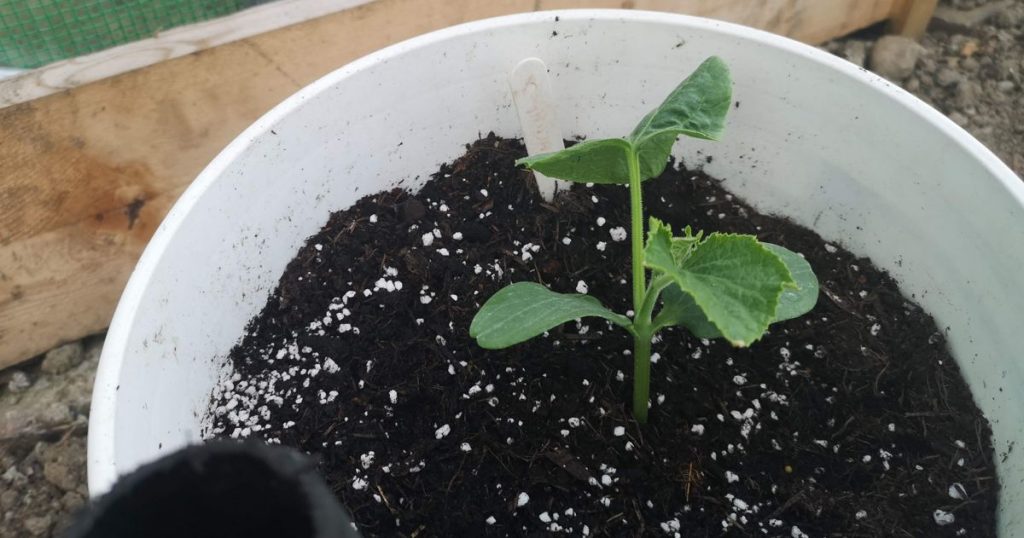
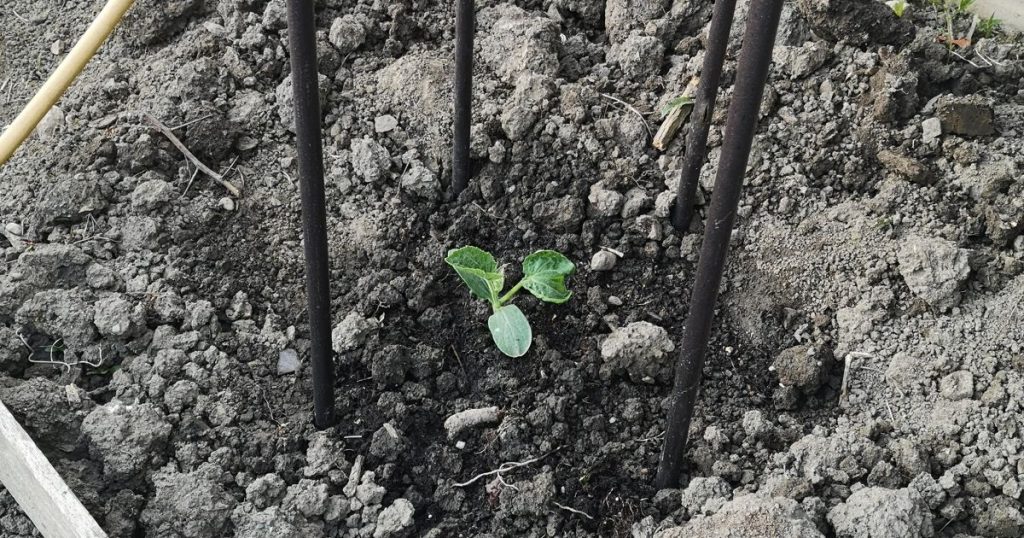
How you can grow cucumbers
What you’ll need:
- Cucumber seeds
- A few small individual plant pots
- Compost
- Watering can or jug
- Greenhouse, polytunnel or under glass – somewhere protected from the weather
What you’ll do:
- In April, fill each plant pot three-quarters full with compost. Water the compost lightly.
- In each pot, plant one seed on its edge pointing downwards and cover with an inch of compost.
- Water every week or so if the compost looks dry, but don’t overwater them.
- Once the seedlings have at least 4 true leaves (the first 2 leaves don’t count), then transplant to larger, deeper individual pots and water well. Alternatively, plant outside if that variety is suitable for outdoors.
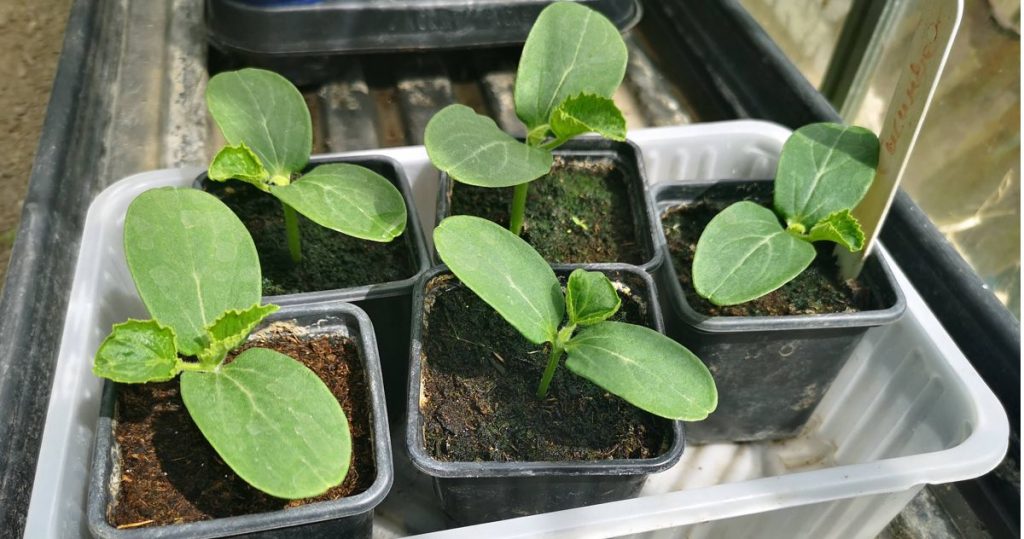
Caring for cucumbers
Water regularly – increasingly as the plants grow larger.
Support their growing weight – ideally fasten a long piece of rope or strong twine from the greenhouse or polytunnel framework, make knots that are spaced out all along its length, and use a tie to secure the plant to each knot as it grows. The plant will also latch itself onto the supports using its tendrils. Alternatively, use canes stuck into the plant pot.
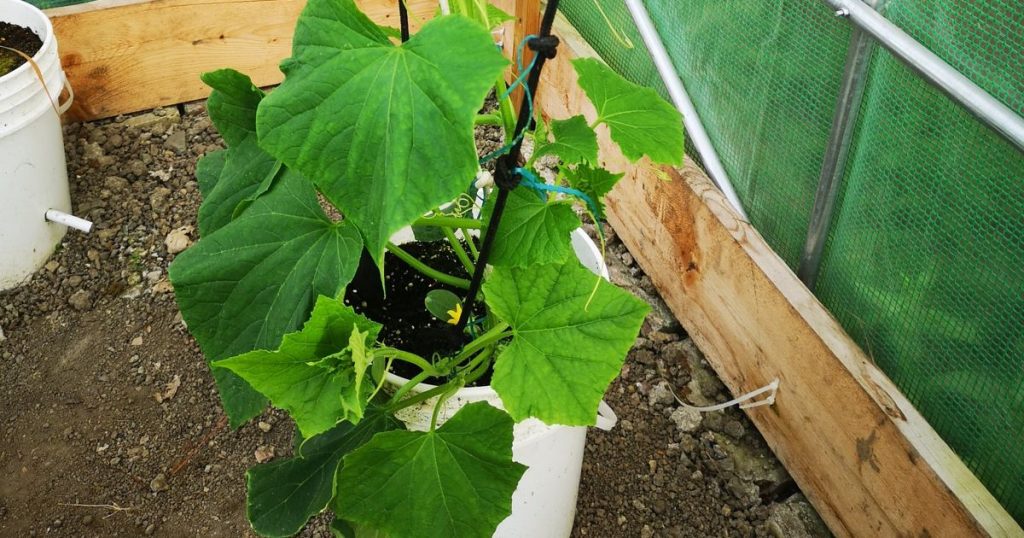
Cut off leaves – if you have lots of leaves then cut off a few to allow light and insects to reach the cucumber flowers and allow for better air circulation.
Feed weekly once cucumbers start forming – you will get healthier plants and more cucumbers if you regularly feed them. Apply tomato feed or homemade comfrey feed every week. They particularly need high levels of nitrogen so give them a homemade nettle feed if their green colour is fading.
Snip off the growing stem and any side shoots – do this when they reach about 6ft high, otherwise your cucumber plant will put its energy into growing taller, rather than growing cucumbers. Regularly check and snip off any further side shoots.
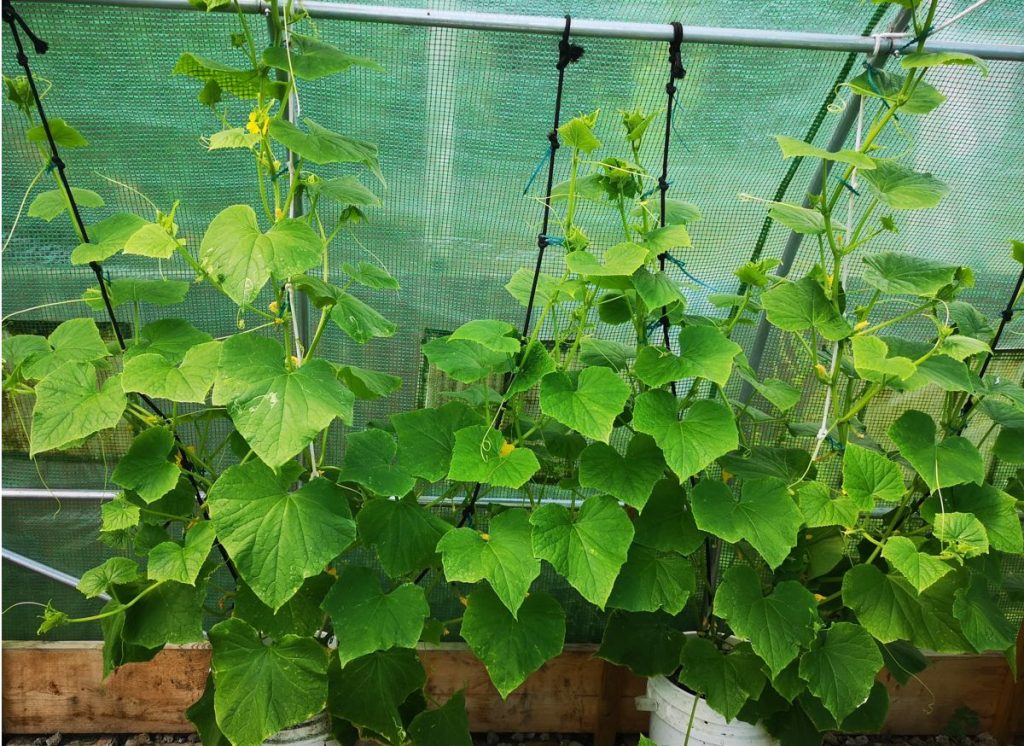
Harvesting cucumbers
Harvest cucumbers when they are still shiny. Simply snip off with scissors, leaving as much of the stem attached to the cucumber as you can.
Check the length of your variety on the internet so you know how long to leave them growing. Most cucumbers are dark green but you can get lighter shades and other colours.
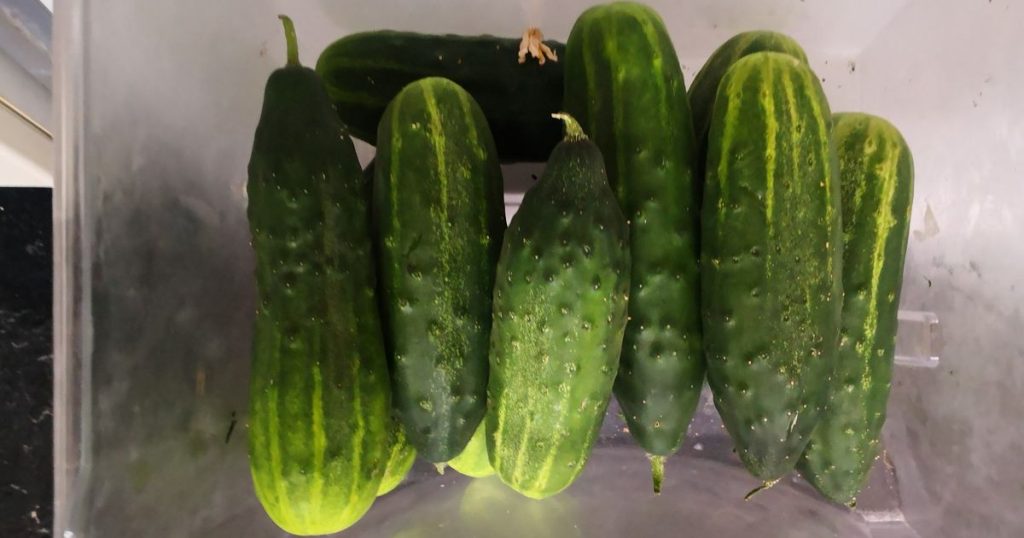
Problems
As long as you water them regularly and support them as they gro, you shouldn’t encounter any problems.
Storing cucumbers
Store in the fridge vegetable drawer tightly wrapped in cling film.
Alternatively, pickle them in vinegar and store in jars in a cool, dark place, where they will last for months.
